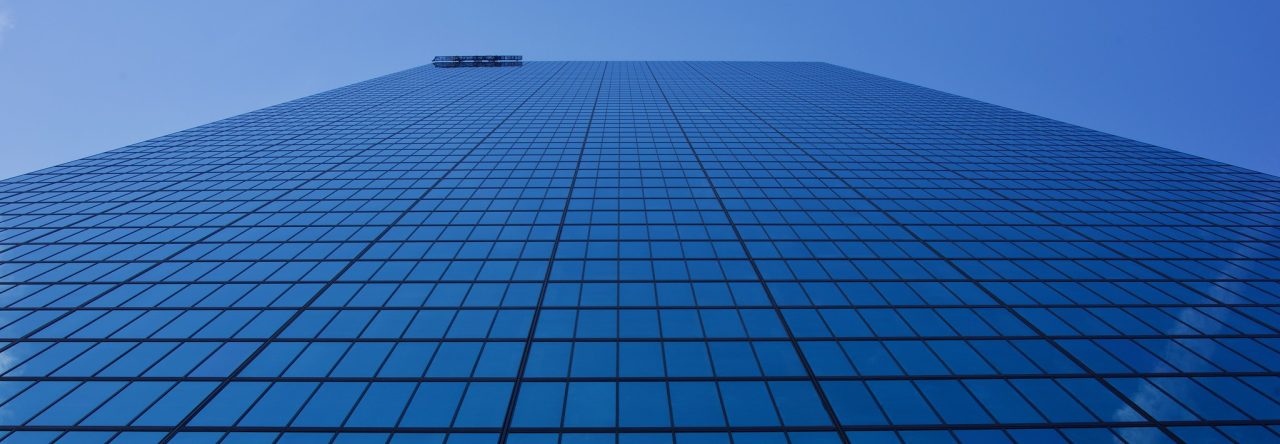Got here safe and sound, after only a three hour wait at the border. A tour guide I met in line was very helpful, and procured the forms I needed to fill out, which were visible no where. Having to fight through the crush of people just to find out you don’t have quite all the documents you need is quite disheartening. However, when you consider what we would have done to a Syrian who arrived on our shores without a visa, it was actually quite mild.
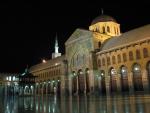
Umayyad Mosque
Last night I wandered around the old city, stopping for pistachio encrusted ice cream, felafel and a fresh squeezed orange juice. Not sure my stomach can handle the blackberry juice that seems to be everywhere; I really don’t want to get sick again. The Umayyed Mosque is breathtaking at night, when the marble courtyard gleams with the reflections from the lit minarets. The interior is nicely decorated, but not as overwhelming as the mosques in Istanbul. The rectangular layout might have something to do with it.
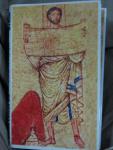
Synagogue Fresco
This morning I went to the National Museum, which has an incredible 2nd century synagogue with walls covered in frescoes. They are apparently quite serious about visitors not taking pictures of it, with several hand written NO PHOTO signs. First the guard eyes me as I leave with my camera slung over my shoulder, and I put it away. But then he follows me down the hallway, and threatens to take me to the soldiers unless I delete the photos. I do, and then wait for him to leave on his rounds.
Here’s where I got stupid. I went back and did it again with no one there. But when the guard saw me leaving the synagogue for the second time, he was on to me. He demands my camera, which I refuse to give him. Now he gets angry, and I get angry too. He grabs my elbow and tries to lead me to the soldiers, but I shake him off, tear up my entrance ticket, and leave the museum. This might seem out of character, but getting around here seems to require a level of aggressiveness that would be out of place in the States. But when you have to fight through lines every day, you sort of get into the spirit of it. Anyways, I may have gone too far, and I’ve tried to tone it down a little; and now I know that they’re serious about NO PHOTOS. No matter, the lighting is better in the postcard pack than I would have been able to manage anyways.
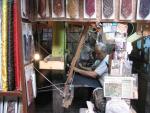
Silk Loom
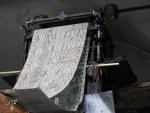
Pattern Punchcards
Wandering back to the Old City, I shopped in the souq for gifts, stopping at a handmade silk store. The loom is actually run on punch cards, which I found particularly amusing. While there are tacky belly dancing outfits available on every corner, they are either really trashy or made of low quality fabric. The silk is expensive, but much nicer, and also a typical Damascus ware.
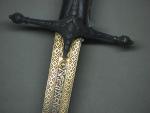
Damascus Steel
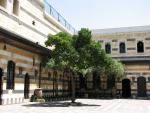
Azem Palace
The Azem Palace is labeled as a “must see” in the guidebook, and it’s clear why. It was the home of the governor of Damascus in the late 1700’s, and is now used as an ethnographic museum. While the displays are a little cheesy, the architecture is simply stunning. The alternating basalt and sandstone walls are typical of the area and time period. They also had a great weapons room, although the tradition of swordmaking seems to be replaced by cheap souvenirs.
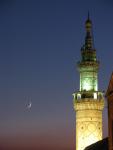
Moonlit Minaret
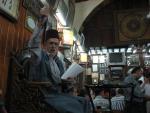
Abu Shady
At night I wandered around the Christian Quarter, getting myself thoroughly lost. I eventually had dinner at Leila’s Terrace overlooking the Umayyed Mosque. Seeing it at sunset, I was struck again by its beauty and stature. I then saw a professional storyteller at an atmospheric coffee shop. He seems to be the last of his kind, replaced like so many things by television.
This is the most stereotypically “middle eastern” place I have ever been, with the busy souq, chaotic traffic, and generous hospitality that entails. They have done a wonderful job of preserving the character of the Old City, without opening it to the kind of rampant development that would destroy it. While it was a hassle to get here, it was definitely worth the trip.
